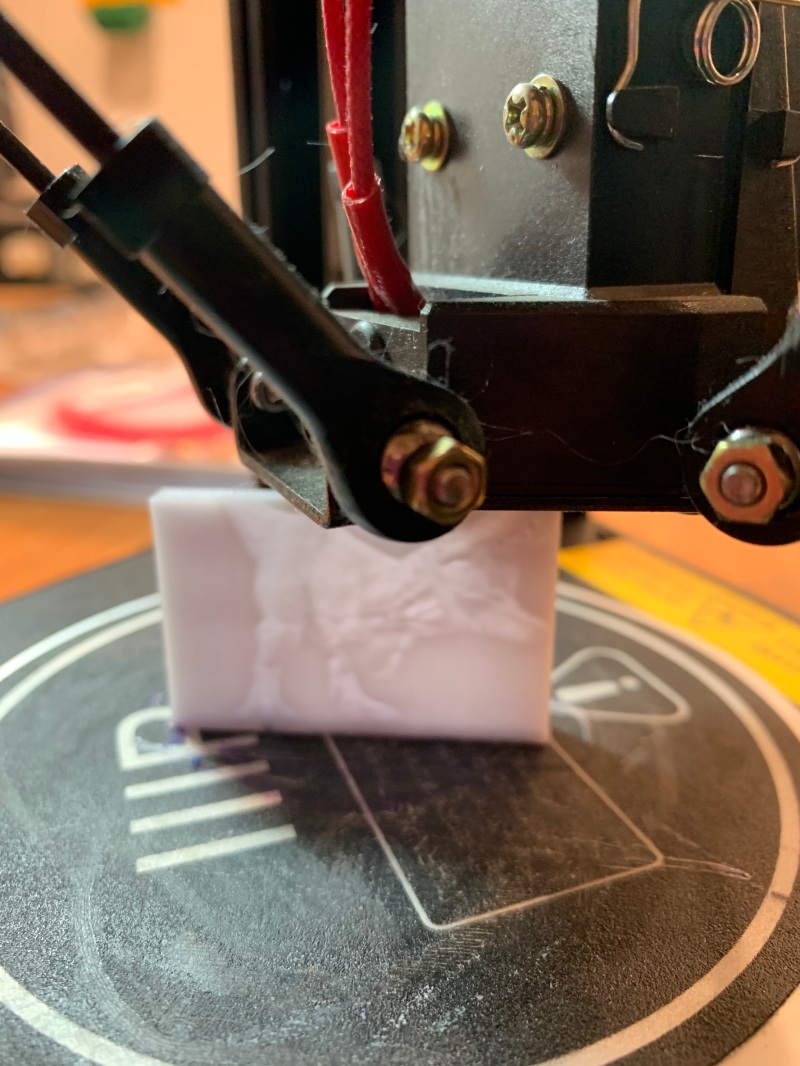I’ve been working with AVA Gallery and Art Center, a local art gallery that offers a large variety of art classes, workshops, and drop-in sessions, to develop a 3d printing class for middle school students. My first class offering is a 5-week, afterschool, 2-hour class for a maximum of 8 students. AVA has a media lab with desktop computers and room to set up my class.
I am supplying my own 3d printers and filament. I have acquired 4 Monoprice mini delta 3d printers for use with the class. I use a delta printer to run a demo when I’m selling my 3d printed earrings and magnets. They are highly portable and fun to watch. We print a different figurine during the summer farmers market each week. Kids are always stopping by to see what we are printing (adults, too). It generates a lot of curiosity and questions about 3d printing.

Monoprice Mini Deltas running
For this first session, I have 3 students signed up, 2 girls and 1 boy. The low number is fine with me because it gives me a chance to run through the mechanics of the class, seeing if my lessons hit or miss. The students are young middle schoolers – 5th and 6th grade. I know two of them as they are local and used to go to the elementary school where I work.
My plan for the 5 weeks was to start with BeetleBlocks– rings, nameplates, and Turtle-logo like pendant designs, then switch to TinkerCAD and go from there. On the first day, I found out that only one of them liked jewelry and was excited about rings, earrings, and necklaces. The other two, not so much. They coded and printed rings in BeetleBlocks but weren’t interested in going through the iterative process to reprint them to fit better. Oh well. While the rings were printing they explored BeetleBlocks, made nameplates or checked out community made designs, but then they were done.

The next week I introduced TinkerCAD. I showed them different options for TinkerCAD and let them explore but didn’t direct them to make anything specific. One student had a very specific figurine in mind but only a beginner’s set of skills and became frustrated. The computers in the lab are also really slow and TinkerCAD was lag-y. I was telling them to click and breathe for a bit there. One student worked on his project from home and reported that it was quite a bit less frustrating.

TinkerCAD design worked on at home.
On the third week, I decided to introduce them to lithophanes since TinkerCAD was painful to use. We went to http://3dp.rocks/lithophane/ and uploaded a photo. I need to play with the settings a bit more, but Deltas print 3d lithophanes very nicely since the bases don’t move.

Lithophane photo printing vertically.
Next week we are going to search Thingiverse and find something to print. I hope Thingiverse isn’t laggy. It has trouble loading projects even on a good day. I have an idea for the last week. I think we will make a mobile of our 3d prints to showcase the class and hang it in the AVA.
The students are getting skilled at running the deltas -preheating, loading the filament, extruding, printing. I’m doing the slicing and the gcode generation this time. I’d thought to install Slic3r on the computers in the media lab and teach the students to slice and generate gcode, but I’m currently doing those steps.
A note for utilizing printer time during class: As one project is printing, the student work on the next project to have ready to print at the beginning of the next class. If there were more students, I’d probably have to spend more time out of class printing.

































